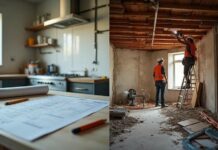Watch out Wall-E. Armstrong Ceilings have produced an animated robot to advise architects and interior designers on acoustic ceiling and wall solutions. The engaging little chap, Alph-E, wings his way around Armstrong’s new acoustic mini-site www.acousticalceilings.co.uk helping to explain why Armstrong’s key concept of acoustic comfort relies on the three letters ICC
The site shows how the correct use of ceiling and wall solutions to optimise acoustics means building users can be understood but not overheard or disturbed and explains how the manufacturer’s portfolio of three dedicated ranges of ceiling tiles meets these individual requirements.
For instance, the company’s standard range of medium-density ceilings strikes a balance between blocking unwanted noise from outside while enhancing sound quality inside building interiors such as classrooms and conference rooms.
And its dB range of higher-density ceilings minimises noise transfer between rooms, helping to keep conversations private in building interiors such as private rooms and cellular offices.
Then its OP range of lower-density ceilings controls excessive sound reflections, offering customers optimal levels of sound absorption in building interiors such as open plan spaces and libraries.
To complement these passive acoustic treatments, Armstrong’s acoustic mini-site recommends active acoustics or i-ceilings that incorporate services such as public address systems. Other Armstrong products featured include mineral, wood and metal tiles and canopies.
Sections on education, healthcare, retail and leisure, transport and offices each provide information on acoustic documentation, case studies and tools such as a calculator that recommends the number of canopies required to achieve a desired RT (Reverberation Time). Sound tests prevail in all of these sections, comparing the RT in, for example, classrooms and school canteens and banks and restaurants.




























